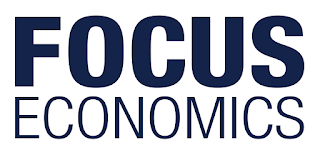WTI BLENDS
WTI Crude Oil prices hit their highest level since November 2014 on 26 June on the back of a tightening U.S. oil market and political tensions with Iran. In the following days, prices fell slightly, trading on 6 July at USD 73.8 per barrel. The print was up 13.9% from the same day last month and was 22.0% higher on a year-to-date basis. Moreover, the price was up 62.1% from the same day last year. Oil prices rallied from the second half of June following a soft patch at the end of May, when prices were aff ected by oversupply concerns. Since then, declining inventories in the United States and fears that the U.S.-led sanctions against Iran could reduce global oil output propelled WTI Crude Oil prices. Moreover, a U.S. economy fi ring on all cylinders is ensuring strong demand for oil. In the fi rst days of June, oil prices moved sideways, and, according to a release from 5 July, the United States unexpectedly posted a small crude build of 1.2 million barrels per day in the week ending 29 June. Moreover, U.S. President Trump is pressuring OPEC countries to pump more oil to lower prices, further rattling oil markets.
WTI Crude Oil prices hit their highest level since November 2014 on 26 June on the back of a tightening U.S. oil market and political tensions with Iran. In the following days, prices fell slightly, trading on 6 July at USD 73.8 per barrel. The print was up 13.9% from the same day last month and was 22.0% higher on a year-to-date basis. Moreover, the price was up 62.1% from the same day last year. Oil prices rallied from the second half of June following a soft patch at the end of May, when prices were aff ected by oversupply concerns. Since then, declining inventories in the United States and fears that the U.S.-led sanctions against Iran could reduce global oil output propelled WTI Crude Oil prices. Moreover, a U.S. economy fi ring on all cylinders is ensuring strong demand for oil. In the fi rst days of June, oil prices moved sideways, and, according to a release from 5 July, the United States unexpectedly posted a small crude build of 1.2 million barrels per day in the week ending 29 June. Moreover, U.S. President Trump is pressuring OPEC countries to pump more oil to lower prices, further rattling oil markets.
BRENT CRUDE
Strong oil market fundamentals and mounting geopolitical threats led Brent Crude Oil prices to increase in recent weeks. The price of Brent Crude Oil, however, could not breach the USD 80 per barrel psychological mark as it did in late May. On 6 July, oil prices traded at USD 75.1 per barrel, which was up 2.5% from the same day last month. The benchmark price for global crude oil markets was 12.5% higher on a year-to-date basis and was up 54.7% from the same day last year. The U.S. is pressuring Iran’s oil buyers to “reduce to zero” their oil imports from the country by 4 November, triggering undersupply fears. These concerns a re exacerbated by Iranian threats of cutting off regional oil exports. Around 30% of global oil exports pass through the Iranian coast. Venezuela’s oil production, furthermore, continues to slip, and drawdowns in U.S. crude inventories remain high, adding upward pressure on oil prices. Saudi Arabia, however, pledged to increase supply as early as in July to alleviate shortage concerns. Moreover, OPEC and Russia declared that they will reduce their compliance level to the oil cap deal from around 150% to 100%, which implies an injection of around 700,000 barrels per day.
Note from Chad-
Prof. Steve Hanke called for a $75.00 end of the year price (perhaps for WTI, since Brent is closing in on $75 pb) that correlates the prices of gold and crude, respectfully. I haven’t used this tool before but I would it seems comprehensive enough. I expect Brent and WTI will increase in price before settling towards the $70-$80 mark by the end of this year.
Data and Forecasts from Focus Economics





